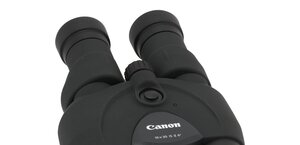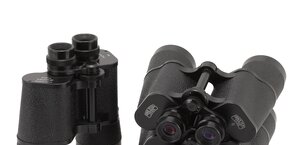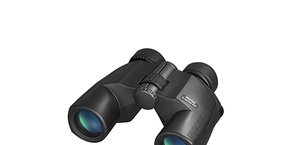Review of four 65 ED spotting scopes
5. Pentax PF-65ED AII – spotting scope review
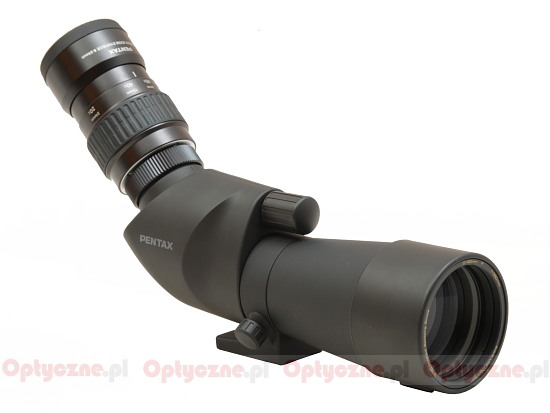 |
Design and build quality
The Pentax company has low dispersion glass spotting scopes with three objective lenses diameters on its offer: 65 mm, 80 mm and 100 mm. The diagram on the site of the producer tells us that we deal here with a triplet objective lens in which one of the elements is produced of ED glass. Deeper inside there is a doublet – a glued set of elements, Its shift allows you to set focus. Then we have Porro prisms; in the case of an angled spotting scope behind the Porro prisms there is another 45-degree one and at such an angle the axis of the eyepiece is set.
Please Support UsIf you enjoy our reviews and articles, and you want us to continue our work please, support our website by donating through PayPal. The funds are going to be used for paying our editorial team, renting servers, and equipping our testing studio; only that way we will be able to continue providing you interesting content for free. |
- - - - - - - - - - - - - - - - - - - - - - - - - - - - - - - - - - - - - - - - - - - - - - - -
The Pentax PF-65ED AII, next to the Delta Optical Titanium is physically the smallest spotting scope which took part in our mini test. It is just a tad longer than the Delta but its tube is narrower so optically it seems to be smaller. According to the producer’s specifications the dimensions of the Pentax 65ED in the angled version are: 270x120x85mm; it weighs 1070 grams.
| Lens diameter: |
65 mm |
| Focal length: |
390 mm |
| Aperture: |
f/6.0 |
| Prisms: |
BaK-4/Porro |
| Optical construction: |
Triplet with ED lens, doublet focusing lens |
| Dimensions (length × width): |
270 mm × 85 mm |
| Weight: |
1070 grams |
| Price: |
2659 PLN (without eyepiece) |
The Pentax features a 390 mm focal length which, joined with the lens diameter, amounting to 65 mm, gives you the aperture fastness of f/6.0. The fastness of this device is practically the same as in case of other spotting scopes, tested here.
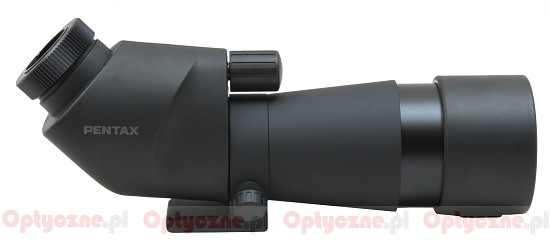 |
Outside the scope is padded by smooth, matt, black rubber armour which covers an aluminum casing. This piece of equipment is nitrogen-filled and waterproof up to 1 meter. The objective lens of the Pentax is surrounded by a ring on which you can find its parameters and inscriptions: „Extra Low Dispersion” and „SMC PENTAX Spotting Scope”. Even without an extended dew shield the front element is hidden inside the tube by about 1.5 centimeters. When you pull out the dew shield, made of hard rubber, the element hides over 5 centimeters deep. It should protect you well against unwanted side light and dampness during night or early morning observations in the conditions of high humidity.
Behind the dew shield the body of the spotting scope gets narrower and in the middle it is surrounded by a ring with a tripod adapter. The tripod mounting ring features a screw which enables you to move it in the range of 180 degrees every 45-degree step. Above the ring there is a focusing wheel. It moves smoothly and is well-damped, working without any squelching. Unfortunately it is a wheel with one gear ratio only so it takes some effort to move it delicately and set the focus with great precision.
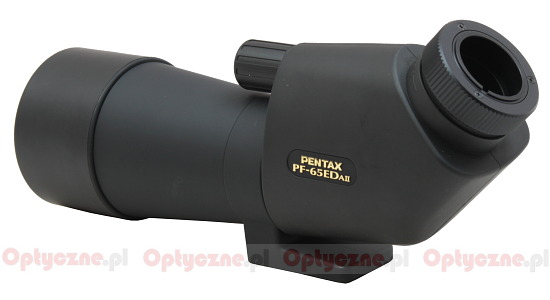 |
On the thickened area on the casing which clasps the prism set you see two inscriptions: PENTAX on the one side, PENTAX PF-65ED All on the other. The spotting scope ends with an eyepiece mount with the standard diameter of 1.25 inches which is surrounded by a metal collet, immobilizing an eyepiece after you insert it. Optical elements are hidden in the eyepiece exit about 3.5 centimeters deep.
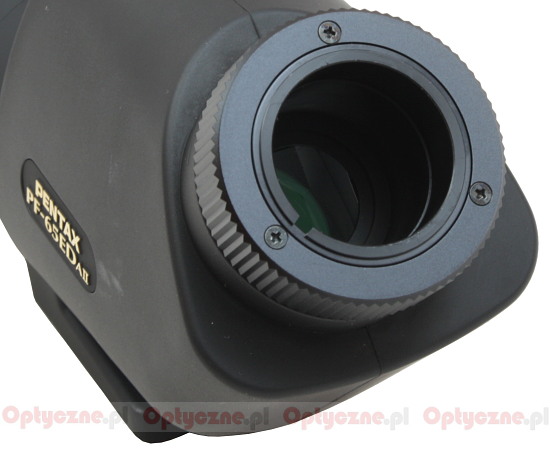 |
According to the producer all air-to-glass surfaces are covered by high quality SMC antireflection coatings. You can notice slightly greenish layers on the objective lens and the prisms. Their intensity is low - definitely lower than that of the coatings of the Celestron and the Acuter. Only the Delta shows a similar reflection intensity and it indicates that these two instruments (the Delta and the Pentax) will have the best transmission.
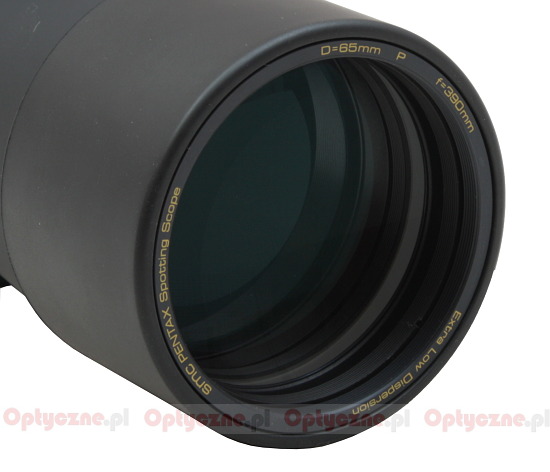 |
Looking inside the tube you can notice that it is blackened in a very thorough way. Its sides are black and matt, the bottom and the prism casing are black as well – even the fixing screws are black. We have small reservations only to a ring inside which they put a focusing doublet – it is not blackened in a perfect way and it is slightly shiny. When it comes to the cleanliness it is beyond reproach. The inside of the spotting scope is devoid of specks of dust or other dirt.
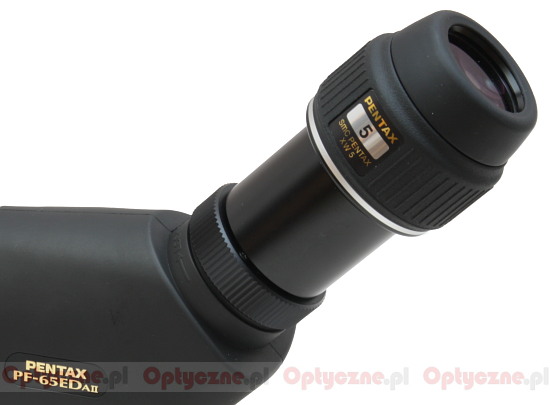 |
Eyepieces
The Pentax spotting scopes aren’t sold with any eyepiece added to the box. However as you deal here with the standard 1.25-inch mount your possibilities are huge – you can choose among hundreds of eyepieces in this standard which are available on our market. Among the producers there is also the Pentax which, apart from great fixed-focal XF, XO and XW eyepieces, offers you also two zoom devices.
For the smallest 65 mm device Pentax seems to recommend an 6.5-19.5 mm eyepiece, which field of view ranges from 42 to 60 degrees and its magnification ratio ranges from 20x to 60x. That eyepiece weighs 240 grams is 88 mm long and, with a diameter of 50 mm, it fits the small 65ED well.
To have a full comparative possibility and a good reference point we decided to order the Pentax scope with another zoom 8-24 mm eyepiece as these are exactly the same parameters as those of the eyepieces added to the Acuter, the Celestron and the Delta.
Already the first contact with the Pentax 8-24 mm eyepiece makes you understand why the producer doesn’t recommend it to the 65ED model – it is almost half as big as the spotting scope itself. It is also rather heavy – it weighs as much as 550 grams. The parameters of both Pentax zoom eyepieces are presented in charts below.
| Focal lengths range: |
6.5–19.5 mm |
| Fields of view range: |
60–42 deg |
| Eye relief: |
11–15 mm |
| Optical construction: |
4 grups / 6 elements |
| Dimensions (length × diameter): |
88 mm × 50 mm |
| Weight: |
240 grams |
| Price: |
1199 PLN |
| Focal lenghts range: |
8–24 mm |
| Fields of view range: |
60–38 deg |
| Eye relief: |
18–22 mm |
| Optical construction: |
4 grups / 6 elements |
| Dimensions (length × diameter): |
144 mm × 69 mm |
| Weight: |
550 grams |
| Price: |
1499 PLN |
In the photo below you can see all 8-24 mm eyepieces, used in this test, compared to each other. From the left you can see the eyepieces added to: the Pentax, the Delta Optical Titanium, the Celestron Regal and the Acuter.
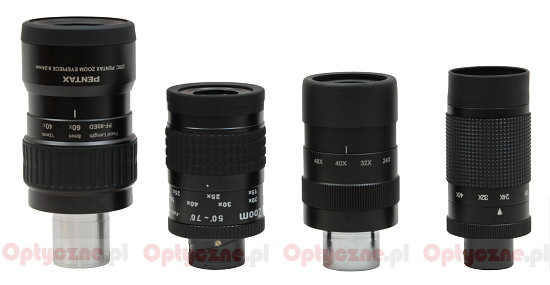 |
One glance at the parameters shows that, although the Pentax XL 8-24 mm is such an expensive eyepiece that for its price we can buy almost every other spotting scope taking part in this test, its performance is hardly impressive. The field of view of 38 degrees, reached at 24 mm focal length, is embarrassingly narrow. Even the cheap Acuter could give you 40 degrees and the Delta – even 50 degrees.
A 60-degree field of view, reached at 8 mm focal length, is typical for the zooms of this class; eyepieces even better than the Pentax have appeared on the market lately. It’s enough to mention here the eyepiece added to the Delta 65ED or the new Baader Planetarium zoom. Both those eyepieces at 8 mm focal length reach a very impressing field of 68.5-70 degrees. Fortunately in the case of the Pentax company nobody forces us to buy their eyepieces if we don’t like them.
The tested spotting scope can be attached to the lanthanum 8-24 mm eyepiece, produced by Vixen, without any problems and you will pay less than half of the Pentax’s price for it. What’s more, even the eyepiece added to the Delta Optical Titanium fitted the extension tube of the Pentax although, as we’ve already mentioned, it is not designed for the typical 1.25-inch mount. Still, we warn you against buying Baader Planetarium eyepieces from the Hyperion series. The tested spotting scope cooperated with some of them very unwillingly – it didn’t want to focus to infinity.
Because we tested the Pentax 65ED with the 8-24 mm eyepiece we are going to describe it now in more detail. The element positioned the closest to the eye is wide, with a diameter of as much as 27 mm. It is surrounded by a fragment of a rubber casing which could be described as an eyecup and on which you can rest your eye socket. That eyecup is positioned on a mobile fragment of the casing, made of metal, which allows you to regulate it. Still the regulation range is not big – taking into account the fact how comfortable eye relief is offered by the eyepiece it could have been bigger.
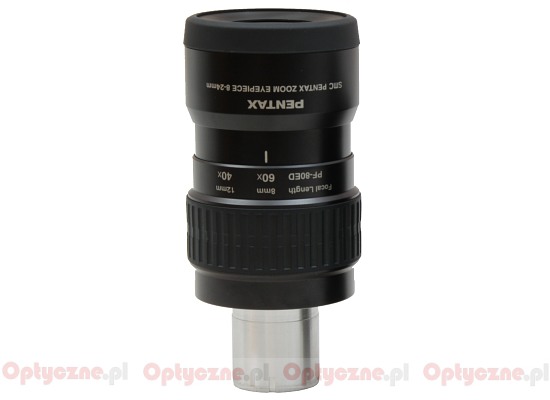 |
On the metal part of the mobile eyecup base you can find two inscriptions: ‘PENTAX’ and ‘SMC PENTAX ZOOM EYEPIECE 8-24 mm’. Then there is the proper eyepiece casing, also made of solid metal. It turns into a zoom ring which is very big, 5 cm wide, so it stretches to the very end of the proper casing. On the ring you can find magnification marks for 20x, 40x and 60x (these are true only for the spotting scope with an 80 mm objective lens, not for the 65 model) and focal length markings at 8,12 and 24 mm. One part of the ring, thickened and covered with ribbed rubber armour, is used to move it; it is almost 2.5 centimeters wide. The ring moves with significant but still acceptable resistance. There are no slacks or unevenness of work.
The eyepiece ends with a standard 1.25-inch mount which is 33 mm long. It includes a set of elements, 22 mm in diameter, and it is only slightly hidden inside the
Vignetting
The photos below show the shape of the exit pupil at the minimum magnification and how the prisms look when photographed within the axis of the eyepiece. The vignetting amounts to 1.3% in this case and exactly so much light, diligently gathered by the lens, you loose at the very start.
| Exit pupil | Eyepiece tube |
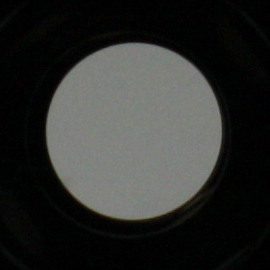
|
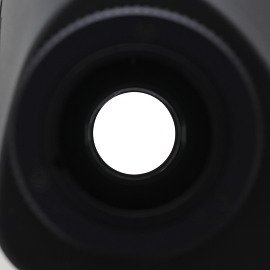
|
The loss is not big and, taking into account small dimensions of the spotting scope and its slim body, you can turn a blind eye to it without any problems. On the other hand at such price point you have every right to expect better results than those of the immediate competitors. The Pentax does perform noticeably better than the Acuter and the Celestron but it slightly looses to the Delta which is equally small and distinctly cheaper.
Inner flares
The photos below present the area near the exit pupil taken at the minimum and the maximum magnification.
| Power 16x | Power 48x |
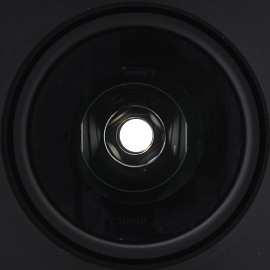
|
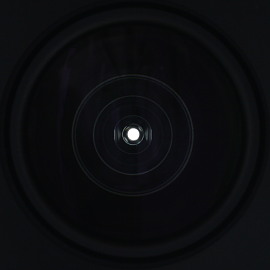
|
Once again the results are noticeably better than those of the Acuter and the Celestron. When it comes to the duel with the Delta it seems it ends in a draw. The Pentax shows more flares at the minimum magnification but significantly less at the maximum one.
Chromatic aberration
The chromatic aberration test, conducted on the image of the chimney, shows the Pentax performs here similarly to the Celestron. At the smallest magnification in the frame centre the aberration is barely noticeable and appears as a delicate yellow rim. When you look at the edge the rim area become bigger and yellow-purple. At the maximum magnification in the frame centre you can notice light purple rim and on the edge – slightly yellow.
When it comes to the look of the Venus the image is similar to that you can get using the Delta Optical but noticeably worse than that of the Celestron. Slightly higher chromatic aberration and noticeably higher astigmatism influenced this result.
The shape of the Moon reminds us the performance of the Celestron and the Delta. The chromatic aberration is noticeable without being a big problem.
Astigmatism
It turns out that in the case of the Pentax, the biggest source of astigmatism is its expensive eyepiece! At 16x is still not so bad but still the level of that aberration is noticeably higher than that of the Celestron. At 48x the difference becomes even greater and the Pentax looses here significantly. When you insert the Celestron eyepiece to the Pentax, the astigmatism becomes lower.
Coma
The coma is corrected very well for a change. In the whole magnification range that aberration appears near 90% of the field of vision radius and is slight on the very edge.
Distortion
At 16x magnification you must take into account the fact that slight pincushion distortion will appear. It is also visible at the maximum magnification but its level decreases to barely noticeable.
Blur on the edge of the field
In this category the Pentax fares the best of all the spotting scopes tested here. In the case of 16x magnification the blur occurs only in the distance of 85-90% of the field of view radius. The situation is even better at the maximum magnification where the image is sharp to the very edge of the field.
Accessories
Along with the spotting scope the Pentax gives you a very stylish and solid protective case. It is designed in such a way that you don’t have to take it off to carry out the observations. A whole series of zippers and Velcro pads allows you to have an access to the tripod mount, the focusing wheel, the eyepiece and the objective lens so your spotting scope never loses its basic functionalities.
 |
Summary
Pros:
- small, lightweight, nifty and solid casing,
- 1.25-inch eyepiece standard mount,
- sharp image in practically whole field of view,
- slight distortion,
- well-corrected chromatic aberration,
- excellent coma correction,
- functional protective case,
- good quality antireflection coatings,
- quite good areas near the exit pupils,
- high quality of workmanship and great blackening inside the tubes,
- long, 30-year guarantee period.
Cons:
- expensive 8–24 mm eyepiece with a narrow field of view and significant astigmatism,
- in this class of equipment the focusing screw should have had a double gear ratio.
Looking at the price of the Pentax 65ED and the reputation of its producer we thought it would dominate its rivals easily in this test. The Pentax won significantly only with the Acuter and perhaps it was slightly better than the Delta. The Celestron proved to be optically better but if you compare its dimensions to those of the Pentax you won’t be surprised. The Pentax focused on handiness and low weight, the Celestron in this category decided not to compromise. If you take into account all the results of our test - those concerning the optics and the build quality as well - the most expensive Pentax would prevail. In fact everyone who decides to buy this spotting scope should be satisfied with it.
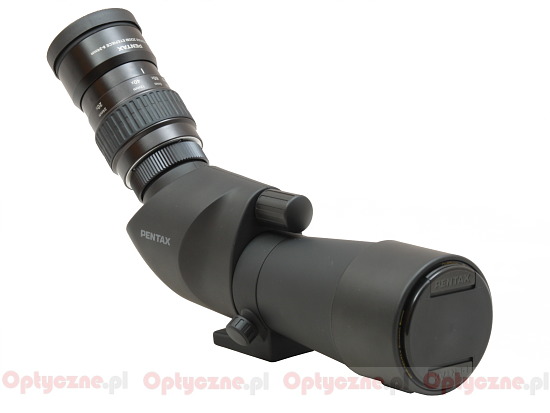 |




